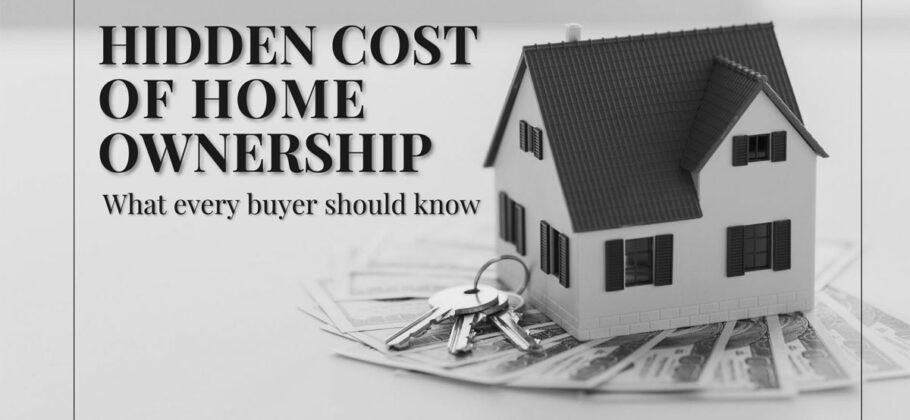Zillow is sounding the alarm about the true cost of owning a home in the United States. According to new data released on Nov. 13, homeowners are paying an average of $15,979 every year in hidden expenses that come on top of their monthly mortgage payments. These costs are rising faster than household incomes, making homeownership even harder for families already stretched thin.
What Zillow Counts as Hidden Costs
Zillow breaks down the hidden costs into three major categories. Maintenance is by far the largest annual burden at $10,946. This covers routine and seasonal work such as heating and cooling upkeep, lawn care, roof repair, gutter cleaning and tree trimming. Property taxes average $3,030 a year, and homeowners insurance adds another $2,003.
Together, these charges add more than $1,300 a month to the average household budget. These expenses increased 4.7 percent over the past year, while incomes rose only 3.8 percent. Zillow notes that most buyers do not fully account for these costs when budgeting for a home, even though they are essential for preserving value and livability.
Where Hidden Costs Are Rising the Fastest
The squeeze is hitting expensive coastal metros hardest. New York City homeowners face an average of $24,381 in hidden expenses each year. Costs reach $22,781 in San Francisco and $21,320 in Boston. These totals sit on top of some of the highest mortgage payments in the country, adding extra pressure to an already stressed affordability picture.
Insurance premiums are driving much of the increase nationwide. Since early 2020, average premiums have risen 48 percent. In some cities the jumps are far higher. Miami now averages $4,607 per year, a seventy two percent increase in five years. Jacksonville has seen premiums climb 72 percent, Tampa 69 percent, and Orlando 68 percent. Outside Florida, premiums rose 79 percent in New Orleans, 59 percent in Sacramento, 58 percent in Atlanta, and 56 percent in Riverside, California.
Zillow senior economist Kara Ng said insurance expenses are rising nearly twice as fast as homeowner incomes and warned that this is becoming a barrier for both first time buyers and long time owners.
The Economic Background
These rising costs come during a period of high home prices and elevated mortgage rates. The average U.S. home sold for $512,800 in the second quarter of 2025, about twenty percent higher than in 2021. Meanwhile, the average rate on a 30 year mortgage was 6.24 percent for the week ending Nov. 13. Although this is lower than the January peak of 7.04 percent, rates remain far above the roughly three percent seen four years ago.
Some analysts believe that falling rates could spark an unusual surge of activity late in the year. Lisa Sturtevant of Bright MLS said that uncertainty about 2026 might be encouraging buyers to act now while rates soften and inventory rises. Builder expectations have also improved. National Association of Home Builders chairman Buddy Hughes called the recent rate declines an encouraging sign for affordability, although most buyers are still waiting for larger drops.
Experts agree the hidden costs of homeownership are reshaping the market. Zillow encourages buyers to think carefully about the type of home they purchase and to plan for maintenance from the very beginning. Larger properties with sprawling yards may look appealing but bring much larger long term expenses.
Economists and analysts also point out that the rising cost of insurance is not just an inconvenience. It is becoming a major financial barrier that can reduce buying power and even drive families out of certain regions. For many households, the difference between what they expected to pay and what they actually pay is significant enough to shift purchasing decisions.
How Hidden Costs Impact Homeowners
For current owners, the growing list of extra expenses can strain monthly budgets. Median monthly mortgage payments were $2,495 in early November, and the hidden costs add another $1,325 on average. Many families must now plan for nearly four thousand dollars a month before utilities, repairs or unexpected problems.
For prospective buyers, understanding these numbers is essential. Zillow warns that overlooking hidden costs can lead to overextending financially, choosing the wrong type of property, or entering a mortgage that becomes difficult to sustain. The rising costs also reduce overall buying power, which can delay homeownership altogether.
The Bottom Line
Zillow’s analysis shows that homeownership in the United States now carries almost sixteen thousand dollars a year in mandatory hidden expenses. These costs are rising faster than incomes and are especially severe in major coastal markets. As mortgage rates remain elevated and home prices stay high, understanding these hidden burdens is becoming a critical part of navigating today’s housing market.





